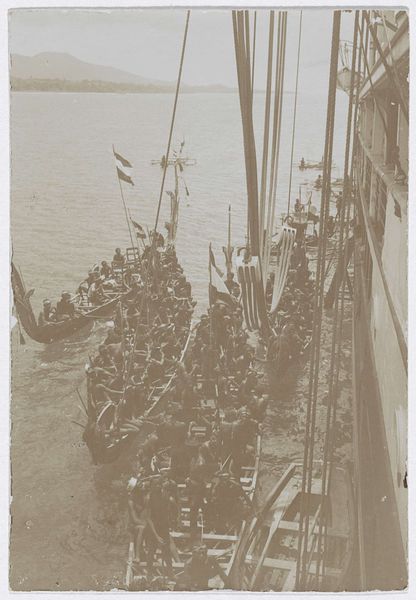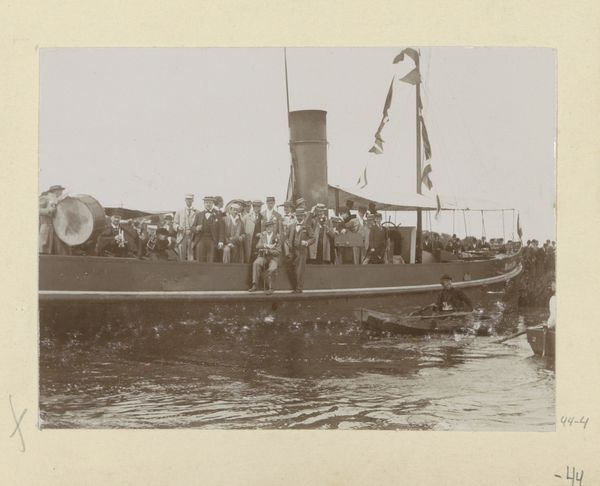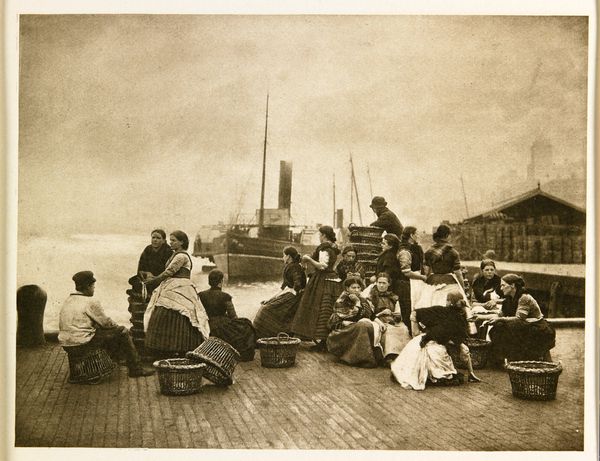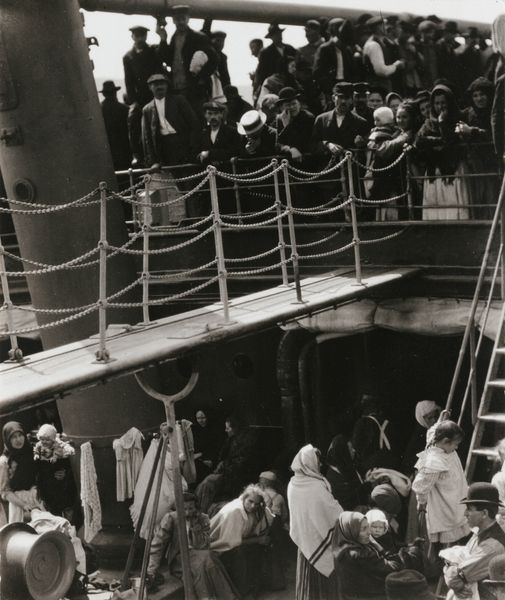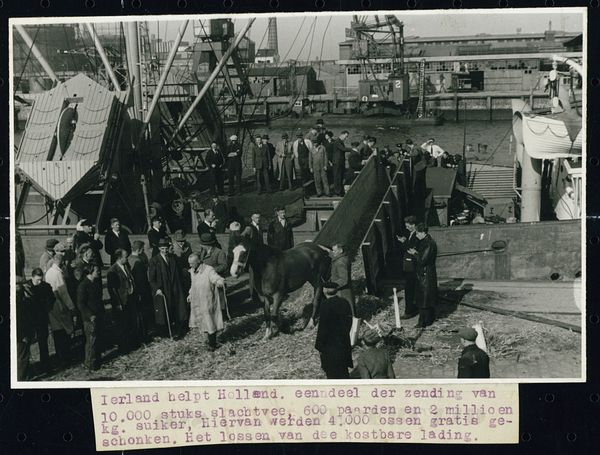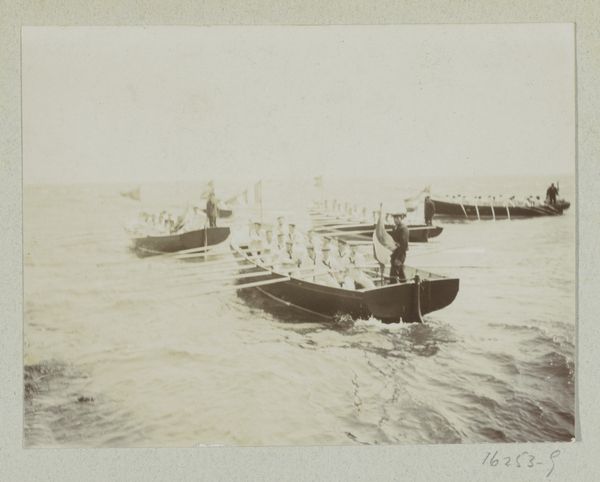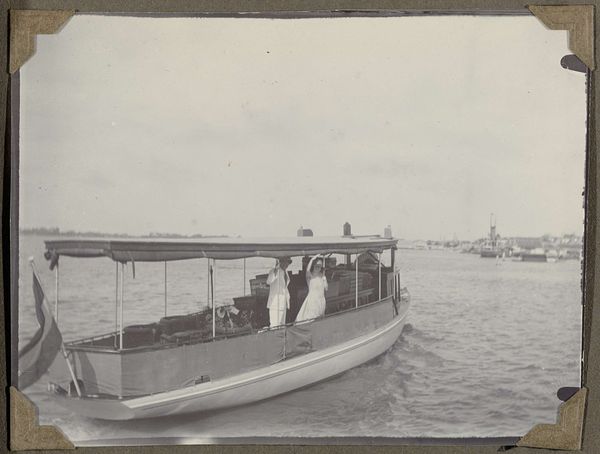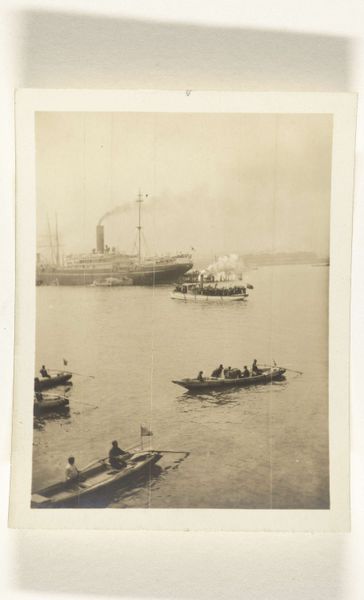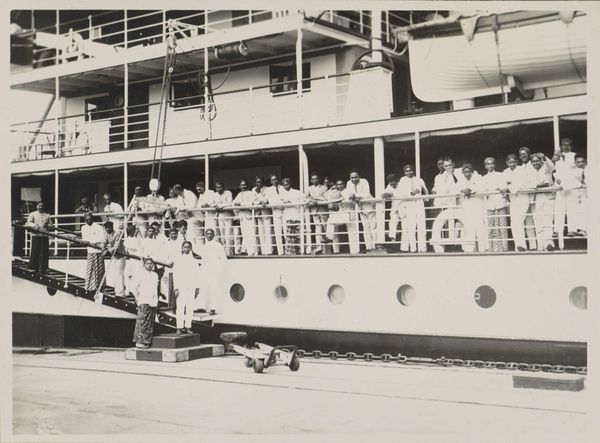
Dimensions: image: 33.6 x 25.9 cm (13 1/4 x 10 3/16 in.) sheet: 40.4 x 28.1 cm (15 7/8 x 11 1/16 in.) mount: 51.1 x 41.9 cm (20 1/8 x 16 1/2 in.) mat: 63.7 x 47.1 cm (25 1/16 x 18 9/16 in.)
Copyright: National Gallery of Art: CC0 1.0
Curator: Alfred Stieglitz created this photograph, a gelatin silver print titled "After Working Hours—The Ferry Boat," sometime before 1913. Editor: It’s evocative, somber even. The monochromatic tones give it a sense of timelessness, despite its subject matter feeling very much rooted in its time. It looks incredibly dense. Curator: Yes, density is key here. Stieglitz's photograph is ripe for interpretation through a social lens. Look at that crowd of anonymous figures pressed together. How do you think class and labor might inform our understanding of this scene? Who were these passengers? What were their lives like? Editor: Absolutely. I am drawn to the tangible quality, too. Look at the materials: wood of the pier, metal and the coal driving that ferry! These are the engines and surfaces upon which lives—and livelihoods—were built in that era. The ferry itself is like a floating factory, packed with workers. Curator: Precisely. Think of the broader socio-political context – immigration, urbanization, industrial expansion. This image captures a slice of a rapidly changing society and speaks to the collective experience of the working class at the turn of the century. It reminds me of Jacob Riis' photographs in their social awareness. Editor: But there is artistry beyond its documentary quality. Note the deliberate composition, the play of light and shadow across the water and structure. There's an almost painterly quality to it. He clearly cared about elevating the act of documentation through skilled craft and consideration of form. Curator: That elevates its resonance, it also serves to invite the viewer into a dialogue with these workers. Does that mass on the boat inspire us to consider concepts such as collective identity and perhaps more theoretical concepts of alienation from each other? What commentary do you believe Stieglitz provides with this image? Editor: Ultimately, the photograph is a document of transit, but on many levels. We observe the transit from work to home. This working class moves upon, as it also fuels and perpetuates economic production. Curator: I appreciate that articulation; it truly highlights the multiple meanings present. Editor: And for me, the materials provide that tactile understanding that helps connect the visual and social histories in ways no history book could do by itself.
Comments
No comments
Be the first to comment and join the conversation on the ultimate creative platform.
